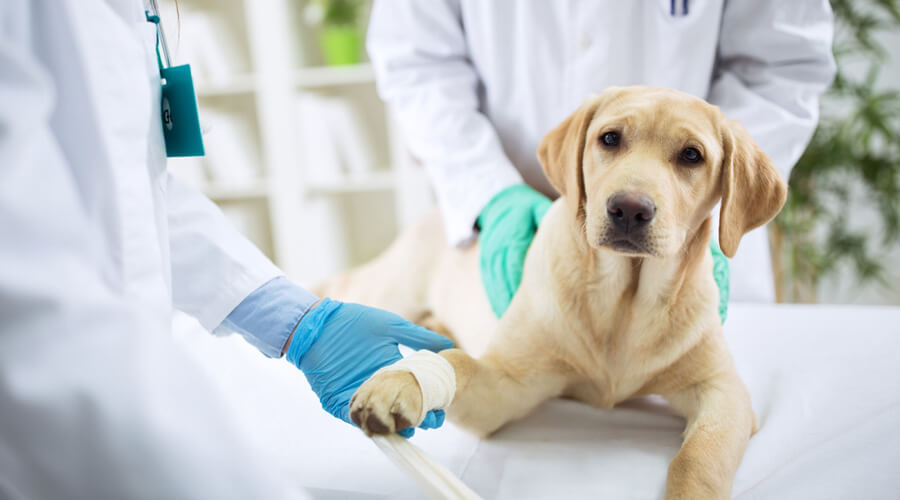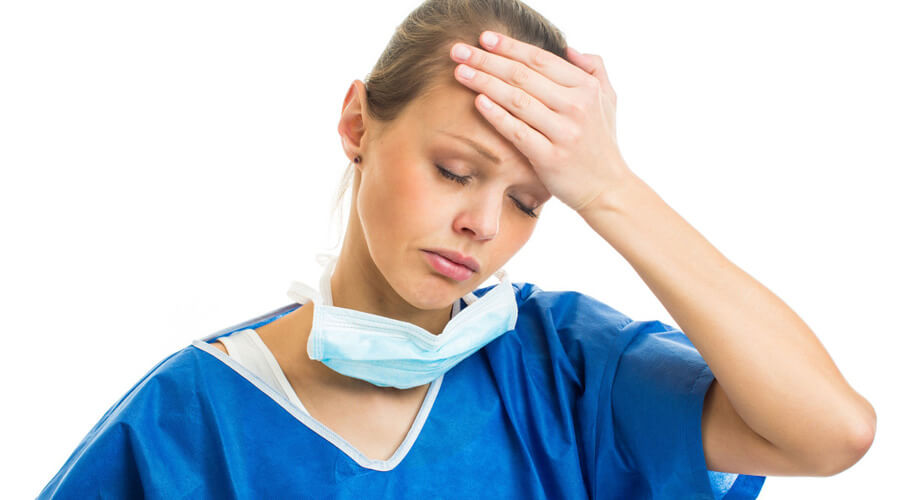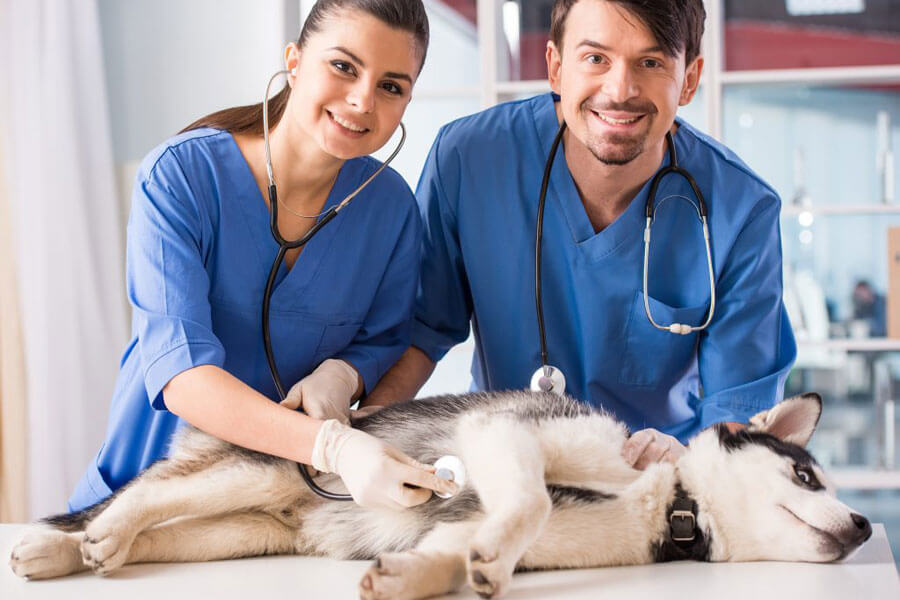Working as a veterinarian is a rewarding career. But with reward comes responsibility! Vets are not only responsible for the health and wellbeing of animals in their care, they also responsible for their own personal safety as well as their staff. Thus, it’s important to be aware of common veterinary hazards.
Of course, there are many types of veterinary hazards including both psychological and physical risks.
Physical hazards can result from ergonomics such as poor body posture and incorrect positioning while performing a task. Injuries can include repetitive strain injuries (RSI), back pain, neck problems, migraines and muscle strains.
Other physical hazards can result from slips, trips and falls, as well as punctures or lacerations from sharps and injuries from animals, such as a bite or scratch.
Top 6 hazards veterinary staff face and how to avoid them
Hazard #1: Cuts and infection
Protection: Cuts and infection is a common veterinary hazard. To prevent or limit the risk, wear protective gloves. Advise staff on the safe disposal procedure for sharps. Ensure cuts are assessed and first aid treatment is available if necessary. Also, apply antiseptic to all cuts (where appropriate) to help prevent infection.
Hazard #2: Slips, trips and falls
Protection: Keep areas clean and well organised. Ensure spills are cleaned up immediately. Additionally, have procedures in place for reporting and cleaning up spills.
Hazard #3: Bites & scratches
Protection: Animal bites and scratches are almost part and parcel of being a vet or working in a veterinary clinic. As such, always restrain animals when appropriate. Ensure all staff members are aware of ‘warning’ signs. And don’t forget to use protective clothing if appropriate.

Hazard #4: Zoonotic disease
Protection: The risk of exposure to potentially dangerous agents via contact with animals is fairly high in veterinary clinics. Therefore, it’s important to wear protective clothing such as gloves, face masks and even goggles where appropriate. Additionally, hand hygiene practices should be promoted. Occupational immunisations should also be considered.
Hazard #5: Exposure to chemicals or medications
Protection: Hand to mouth transfer is a common route of transmission for chemicals and drugs. Make it a policy to wash hands regularly to prevent this from happening. Ensure protective gloves are available and encourage staff to wear them when necessary.
Hazard #6: Back injuries
Protection: Advise staff to seek assistance when lifting a heavy or large animal. Ensure all staff are aware of the proper lifting techniques. Plus, in some instances mechanical aids or staff lifts may be necessary to avoid injury.

Psychological stress
Psychological hazards, such as stress, anxiety and depression, are common amongst veterinarians and can arise from excessive workloads, difficult clients and emotional factors, such as euthanasia.
Common signs of stress include:
- Feeling angry in response to minor situations
- Inability to relax
- Tension or migraine headaches
- Muscle tension
- Weight loss or weight gain
- Lack of focus and attention
- Fatigue
- Increased dependence on drugs or alcohol
It’s important for vets and their staff to be aware of the signs of stress and anxiety and recognise the as veterinary hazards. To help address workplace stress:
- Create a positive work culture
- Engage in non-work activities such as a group lunch or after-work drinks
- Promote open communication
- Encourage staff to discuss workload issues or concerns
- Promote the importance of personal wellbeing such as eating well, good sleep, exercise and relaxation
- Try to promote a positive and fun environment to lighten the load
Everyone in the veterinary clinic is responsible for each other’s safety. Likewise, all staff should know the safety rules and should feel responsible for addressing any hazards that arise that may pose a safety risk to others.
All veterinary clinics should have a system in place to identify and record an instance where someone becomes aware of a hazardous or unsafe condition.
By recognising and being aware of the potential injuries and hazards you face, you can take the necessary precautions or implement relevant procedures to protect both yourself and staff.
Protection & peace of mind
There are several unexpected events that can take place in a veterinary clinic that can result in a claim being made against you or your practice.
Indeed, an accident in the workplace – concerning yourself or a staff member – could result in financial loss or legal action being taken against you. Having the right insurance in place will give you the peace of mind you need. At the very least, consider Public Liability insurance and Professional Indemnity insurance.
Find out more and get a free quote today!
Useful reads:
Coping with stress and burnout as a veterinarian
Occupational injury, disease and stress in the veterinary profession
Latest posts by Liz Walden (see all)
- Pet health: Medicinal cannabis for pets - December 27, 2021
- What pet business insurance do I need? - November 17, 2021
- Pet sitters: how to take time off - November 15, 2021










Leave A Comment